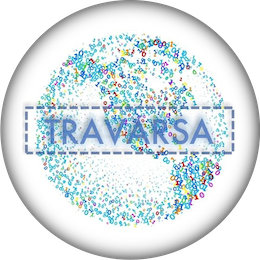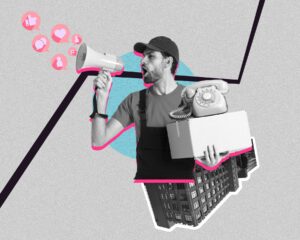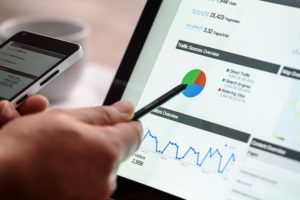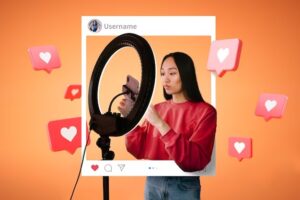Unlock the power of Micro-Moments Strategy. Learn how businesses can engage consumers at....
Read MoreROAS (Return on Advertising Spend) Strategies & Tools
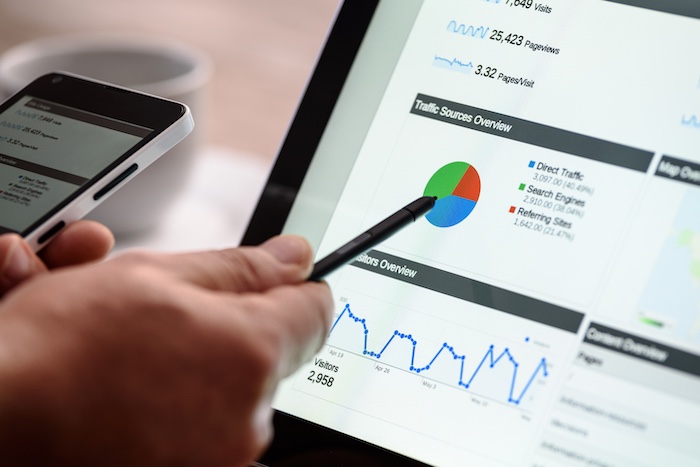
ROAS (Return on Advertising Spend) Strategies & Tools
With the ever-evolving dynamics of digital advertising, it’s imperative for marketers to navigate through the complexities of measuring and optimizing their advertising spend. ROAS serves as a crucial metric, providing insights into the effectiveness of marketing campaigns and guiding decision-making processes. By leveraging strategic approaches and leveraging cutting-edge tools, businesses can unlock the full potential of their advertising investments and achieve greater success in today’s competitive landscape.
What is ROAS ?
ROAS, or Return on Advertising Spend, is a metric used to evaluate the effectiveness of advertising campaigns by measuring the revenue generated for every dollar spent on advertising. It helps businesses understand how efficiently their advertising investments are translating into revenue and provides insights into the overall profitability of marketing efforts. ROAS is calculated by dividing the revenue generated from advertising by the amount spent on advertising.
- Targeted Advertising:
- Targeted advertising involves tailoring your ad campaigns to specific audience segments based on demographics, interests, and behaviors, ensuring that your ads reach the most relevant audience likely to convert, thus maximizing your return on advertising spend.
- Tools: Google Ads provides sophisticated targeting options such as demographics, interests, and remarketing lists. Facebook Ads Manager offers detailed audience targeting based on demographics, interests, behaviors, and custom audience lists. LinkedIn Ads allows precise targeting based on job title, industry, company size, and more.
- Optimized Landing Pages:
- Optimized landing pages are carefully designed and structured pages that are specifically tailored to encourage visitors to take a desired action, such as making a purchase or filling out a form, thereby improving conversion rates and maximizing ROAS.
- Tools: Unbounce provides an intuitive landing page builder with A/B testing capabilities and integration options. Instapage offers customizable landing page templates, A/B testing, and analytics features. Leadpages provides easy-to-use landing page creation tools with built-in conversion optimization features and analytics.
- Dynamic Product Ads:
- Dynamic product ads automatically display personalized product recommendations to users based on their past browsing behavior or interactions with your website or app, increasing relevancy and engagement and ultimately improving ROAS.
- Tools: Facebook Dynamic Ads dynamically promote relevant products from your catalog to people who have shown interest on your website, app, or elsewhere online. Google Dynamic Remarketing displays personalized ads to users based on the specific products or services they viewed on your website.
- Cross-Channel Attribution:
- Cross-channel attribution involves tracking and analyzing customer interactions across multiple touchpoints and marketing channels to accurately attribute conversions, allowing you to optimize your advertising spend across channels for maximum ROAS.
- Tools: Google Analytics provides multi-channel funnel reports and attribution modeling tools to analyze conversion paths across different marketing channels. Adobe Analytics offers advanced attribution modeling capabilities and integrates with Adobe Marketing Cloud for comprehensive cross-channel analysis. Attribution modeling tools such as Convertro and AdRoll help businesses measure the effectiveness of their marketing efforts across various channels.
- Bid Management Strategies:
- Bid management strategies involve optimizing keyword bids and budget allocation to achieve the desired return on investment (ROI) and maximize ROAS, ensuring that you’re getting the most value from your advertising spend.
- Tools: Google Ads Automated Bidding uses machine learning algorithms to automatically adjust bids based on performance goals such as target ROAS (Return on Advertising Spend) or target CPA (Cost per Acquisition). Bid management platforms like Kenshoo and Marin Software provide advanced bidding algorithms and optimization tools for managing large-scale advertising campaigns across multiple channels.
- A/B Testing:
- A/B testing, also known as split testing, compares two versions of a webpage or ad to determine which one performs better in terms of conversion rate or other key metrics, allowing you to optimize your campaigns for improved ROAS.
- Tools: Google Optimize is a free A/B testing and personalization platform that integrates with Google Analytics for seamless tracking and analysis. Optimizely offers a user-friendly interface and advanced targeting options for conducting A/B tests on websites, mobile apps, and other digital properties. Visual Website Optimizer (VWO) provides A/B testing, multivariate testing, and heatmaps for optimizing conversion rates across different devices and channels.
- Remarketing Campaigns:
- Remarketing campaigns target users who have previously visited your website or interacted with your brand, re-engaging them with relevant ads to encourage return visits and conversions, thereby increasing ROAS.
- Tools: Google Ads Remarketing allows you to create remarketing lists and display targeted ads to previous visitors across the Google Display Network, YouTube, and other partner sites. Facebook Custom Audiences lets you retarget website visitors, app users, or people who have engaged with your content on Facebook or Instagram. AdRoll offers cross-device retargeting solutions and integrates with multiple ad networks for maximum reach and effectiveness.
- Keyword Optimization:
- Keyword optimization involves researching and selecting relevant keywords for your advertising campaigns and optimizing bids and ad copy to improve ad relevance and performance, ultimately maximizing ROAS.
- Tools: Google Keyword Planner provides keyword suggestions, search volume data, and historical performance metrics to help you identify relevant keywords for your campaigns. SEMrush offers competitive keyword analysis, keyword tracking, and keyword grouping tools to optimize your PPC campaigns. Moz Keyword Explorer provides keyword research insights, difficulty scores, and SERP analysis to help you prioritize and target the most valuable keywords for your business.
- Ad Creative Optimization:
- Ad creative optimization focuses on testing and refining ad elements such as copy, images, and calls-to-action to improve engagement and conversion rates, ultimately boosting ROAS.
- Tools: Canva is a user-friendly graphic design tool that allows you to create professional-looking ad creatives with customizable templates and easy-to-use editing features. Adobe Creative Cloud provides a suite of design tools including Photoshop, Illustrator, and InDesign for creating custom ad creatives and graphics. Facebook Creative Hub allows you to mock up and preview Facebook and Instagram ad creatives, collaborate with team members, and share previews with clients or stakeholders.
- Performance Monitoring and Analytics:
- Performance monitoring and analytics involve tracking key metrics such as clicks, conversions, and ROI to measure the effectiveness of advertising campaigns, identify areas for improvement, and optimize ROAS.
- Tools: Google Analytics offers comprehensive website analytics and conversion tracking capabilities, allowing you to measure the performance of your advertising campaigns and analyze user behavior. Facebook Analytics provides insights into ad performance, audience demographics, and user engagement across Facebook, Instagram, and Messenger. Data Studio is a free data visualization tool that integrates with Google Analytics and other data sources to create customizable dashboards and reports for tracking and analyzing advertising performance.
As the digital marketing landscape continues to evolve, mastering ROAS strategies and utilizing advanced tools is essential for businesses to thrive and stay ahead of the curve. By implementing data-driven approaches, continuously monitoring campaign performance, and leveraging innovative technologies, marketers can optimize their advertising spend, maximize ROI, and propel their businesses to new heights of success in the dynamic world of digital marketing.
Guerilla Marketing Strategies – Tools and Tactics
Discover the power of guerrilla marketing strategies – from viral stunts to interactive....
Read MoreHow to start your career as a Software Testing Engineer ?
Unlock the path to becoming a Software Testing Engineer with our guide. From....
Read MoreVarious Web Development Stacks – Introduction
Discover the right web development stack for your project! Explore the components, features,....
Read MoreNo-code/Low-code Development Benefits and Platforms
Discover the benefits of No-code/Low-code Development and explore leading platforms in this revolutionary....
Read MoreUse of AI and ML in Advanced Marketing Strategies
Explore the dynamic synergy of AI & ML in advanced digital marketing. Uncover....
Read MoreIntroduction of Various Databases and usage
Explore diverse databases: MySQL, PostgreSQL, MongoDB, DynamoDB, and more. Learn their uses in....
Read MoreHow to start your career in the field of Data Science?
Instagram has crossed the threshold of being a place to watch extremely filtered....
Read MoreGetting Started with Microsoft Fabric
Unlock the power of Marketing Automation with Machine Learning. Elevate your strategies, engage....
Read MoreHow to start your career as a Front-End Web Developer ?
Elevate your career with Front-End Web Development. From HTML to frameworks, certifications guide....
Read MoreROAS Strategies and Tools
Unlock the power of Marketing Automation with Machine Learning. Elevate your strategies, engage....
Read MoreZero Trust Architecture (ZTA) – Strategies and Tools
Unlock the power of Marketing Automation with Machine Learning. Elevate your strategies, engage....
Read MoreInfluencer Whisper Campaigns – Strategies & Tools
Discover the strategies & tools behind Influencer Whisper Campaigns. Learn how brands can....
Read MoreMulti-channel Marketing Orchestration and Attribution Modeling
Unlock the power of multi-channel marketing orchestration and attribution modeling. Learn to streamline....
Read MoreTop 10 Cyber Security Threats Prevention strategies and solutions
Arm yourself with insights! Explore top 10 cyber threats and fortify your digital....
Read MoreHow to prepare for a job interview?
Prepare for success with our expert guide on how to excel in job....
Read More